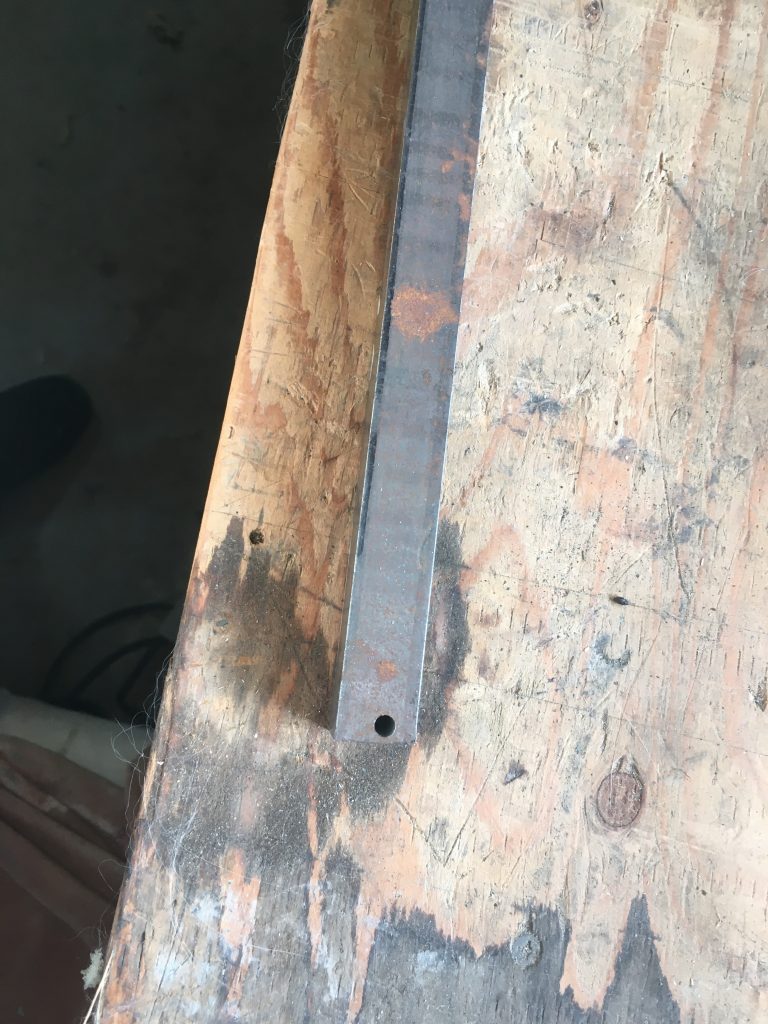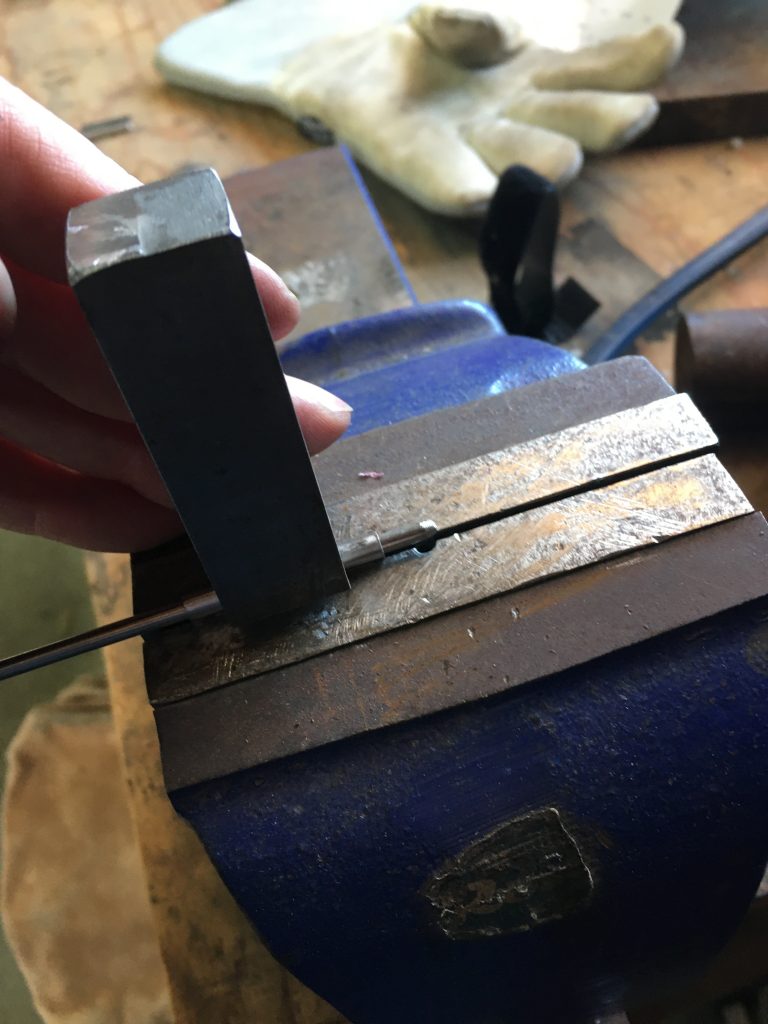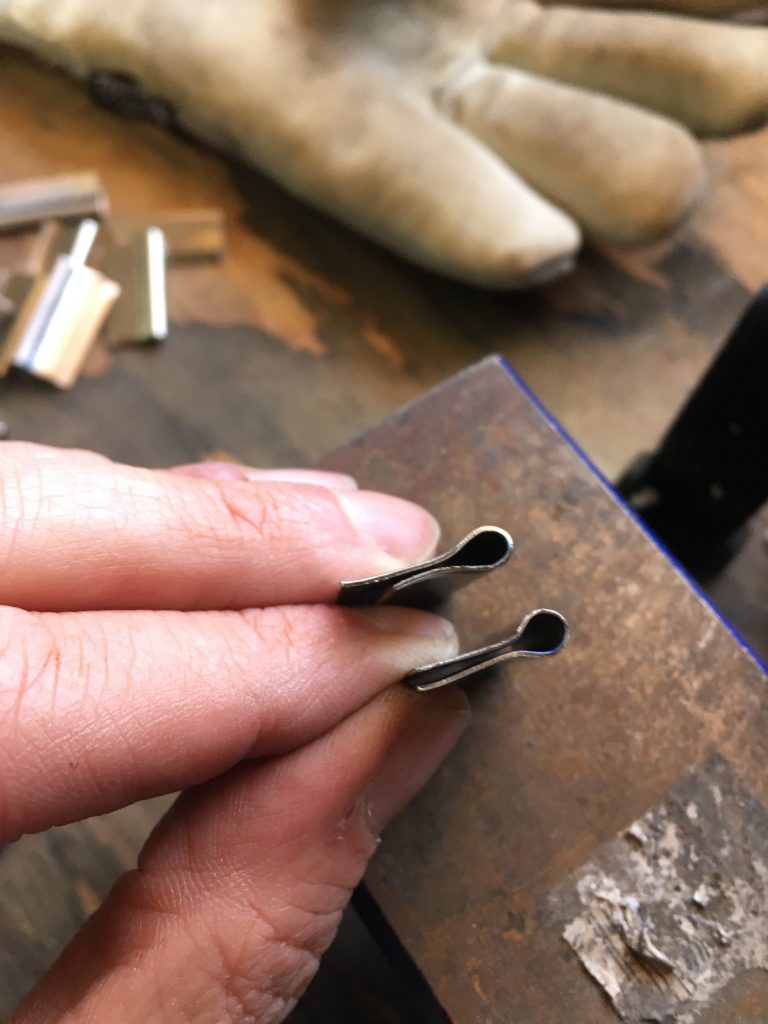This is one of the “simple” tools that I have made and kicked myself afterwards. It took less than 30 minutes to make, and saves me about 5-10 minutes per hinge!
For background I’ve been making a fair number of hinges lately, and I realized that it would be useful if I could put together a tool to “set” the curve of a hinge, rather than working to hammer the metal repeatedly onto the pin to make it conform nicely. When thinking about this I realized that the solution would be similar to a rivet set, but instead of a dome, as used in a rivet set, I needed a “gutter”. The easiest gutter I could think of was to drill through a chunk of steel and then cut through it. Instead of spending lots of time analyzing (my normal modus operandi) I decided to try it, and then adjust if it didn’t work. My first pass Worked remarkably well, taking a significant bite out of my hinge build times, and making it easy tobuild a nice clean hinge knuckle. Before I get into the details (and pictures) I figured I’d provide a nice table outlining the size of drill you will need to get appropriate clearance for a 1/8″ pin:
| Sizing to accommodate a 1/8″ Hinge pin | |||
| Drill Size | Max Hinge thickness | ||
| Fraction | Decimal | Gauge | Decimal |
| 1/8 | 0.125 | 0 | – |
| 5/32 | 0.156 | 28 | 0.016 |
| 3/16 | 0.188 | 24 | 0.031 |
| 13/64 | 0.203125 | 22 | 0.039 |
| 7/32 | 0.21875 | 20 | 0.047 |
| 15/64 | 0.234375 | 18 | 0.055 |
| 1/4 | 0.25 | 16 | 0.063 |
The table is a fancy way of taking the difference between your hinge pin size and the drill bit size and divide by 2. You will note that I included some “silly” sizes, since for armour there is no point making a “hinge set” on metal significantly thinner than 1/32″ / 22 ga (3/16″ for a 1/8″ hinge pin). In general I make my hinges with material ranging from 0.5 to 1mm (24 Ga to 20 Ga) so I decided to make this tool with a 7/32″ hole.
Construction
While I’d usually put this article together and have pictures for every stage, there really isn’t that much to show for this tool – all of the pictures (other than the “beauty shot” at the top) follow the description, and you can probably build this tool without looking at the pictures at all!
For construction I’d strongly recommend using a drill press, if only because it will ensure that your channel is parallel to the axis of your setting tool. I will admit that for my prototype I didn’t even bother to center punch my hole, using a chunk of 3/4″ square stock and putting the drill bit somewhere near the middle of the bar, about 3/8″ from the end (trying to leave about 1/8″ of metal on the end of the bar). Once the hole was drilled, I used an angle grinder with a cutoff wheel to roughly cut through to the middle of the drill track and then a sanding wheel and a file to clean up the rough edges.
As you can see, the sides are not symmetric, and it’s a generally pretty crude tool, but it worked on the first try, and I can apply quite a lot of force without worrying about upsetting the metal on the barrel of the hinge.



